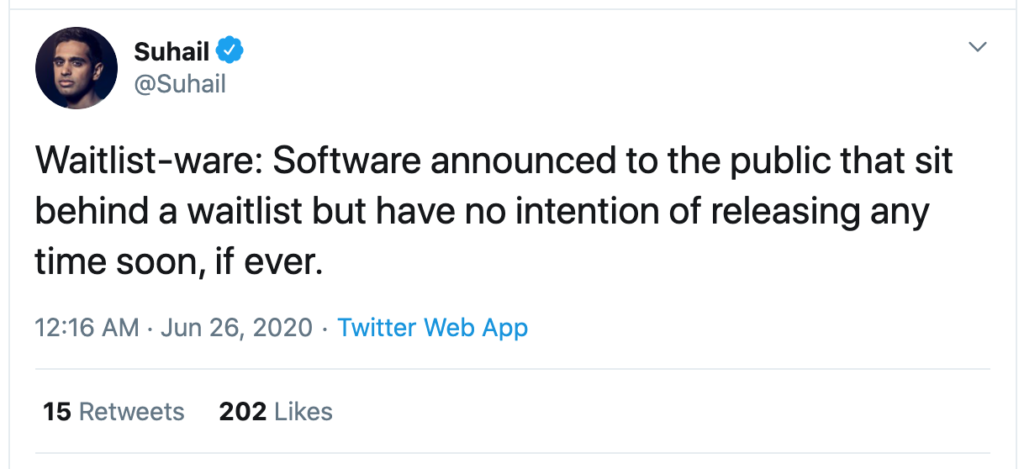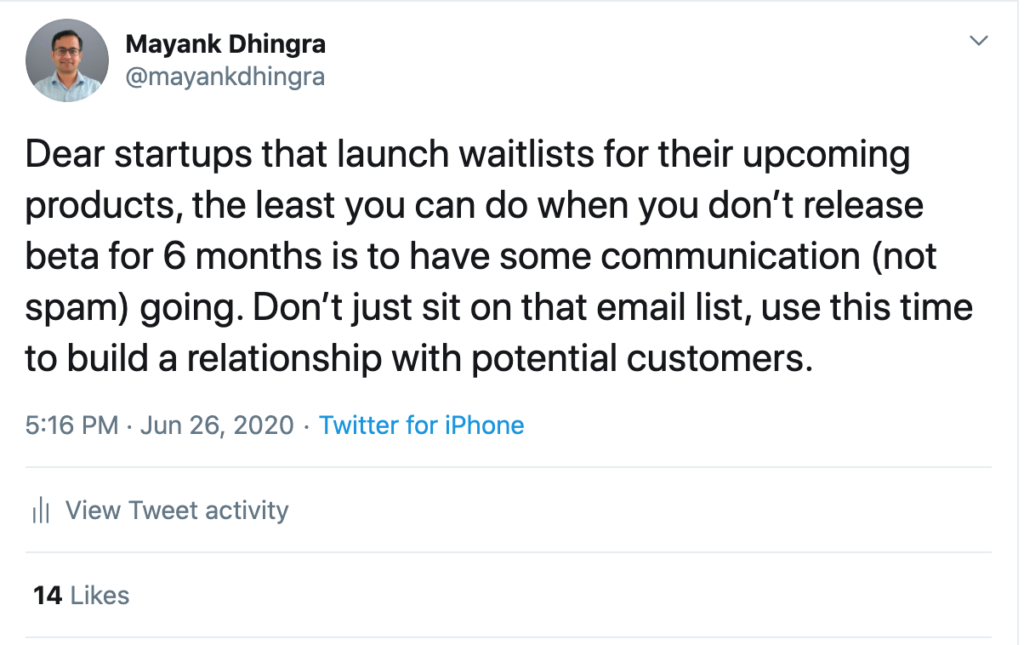A few days back upon submitting my email for an interesting looking upcoming product’s waitlist, I had a feeling of deja-vu. I felt I have done this at least 5-7 times over the last few months but if I were to try I can’t recall even a single name out of all those products I signed up to be in the waitlist for.

Herein lies the problem and that’s what bugged me.
What’s the point of signing up for a waitlist if it’d take you forever to release your product or approve my request?
What’s worse, you’ll have to keep guessing what happened to your invite or the product you signed up for.
Did the startup shut up before releasing or were they just collecting email ids?

I guess we’ve all been there. Now, let’s try to think what’s an ideal way to approach this.
What would the user be interested in?
As a user, my main concerns in this context (with varying priority as time goes on) would be
- What is happening with my invite?
- What is happening with the product while I wait for my invite?
- Why should I still bother about your product ?
How could these concerns be handled?
Let’s divide this into two parts:
Invites are being released to users in waitlist – If uses on the waitlist have started getting invites for the product, you can share the details on invites being sent out (how many per day/week/month) and basis my waitlist rank, when should I expect to get an invite and if there’s something I can do to expedite this process.
Just to keep up the excitement, you could also add some reviews by users who’ve gotten access or any great PR/product reviews you are getting.
Invites haven’t started going out to users in the waitlist – This means, the product is not ready to be released to the waitlist yet, which means either you didn’t plan this properly or ran into unexpected delays.
Either ways, the odds of users losing interest on your product at this stage are really high (unless of course if you are building hey.com, or will launch a stellar product that people will be more than happy to get to use the product and nothing else would matter.
The first thing in this case that needs to happen is trying to get a handle on expected date on which you can release the invites. Depending on how far into the future, this date is, you can plan a cadence of communication. Communication plan for 1 month will be very different from one for 6 months.
Few things you can keep in mind while designing a communication plan for users in waitlist for delayed product release.
- Product Release Date and Communication Cadence – How often will you send the communication.
- Product Progress – Updates on how the product is shaping up. Details on this process (technical challenges or product decisions etc can resonate with users with appreciation for these things).
- User Involvement – If you are up for it, you can actually have deeper engagement with the waitlist by having them part of user research interviews or beta testing programs
Closing Thoughts:
- Start accepting waitlist when product is nearing the launch date.
- Whether you are rolling out the invites or not, keep updating users on waitlist regularly (waitlist updates or product progress).
- Give option to users to change the frequency of your updates or unsubscribe.
- If possible, engage with users and build deeper relationships with them.
